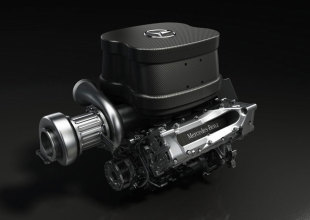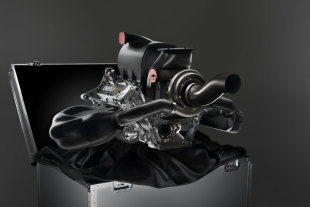- 2014 news
2014 engines could create rifts

FOTA chairman and McLaren boss Martin Whitmarsh has urged Formula One bosses to put the good of the sport ahead of their team's interests in 2014 and work together in the new turbo era to ensure a reasonably level playing field for engine performance.
The process of levelling the performance among the manufacturers - Ferrari, Renault and Mercedes (plus Honda in 2015) - will be conducted alongside a staged freeze of power unit technology from 2014 to 2020. Since 2007 Formula One has been operating under 'frozen' engine specifications to keep costs down, and while there is a similar plan for the V6 turbos and their Energy Recovery Systems, getting to a point where the relative competitiveness of engines is as close as it is now could be contentious.
The stages of the freeze are mapped out in the 2014 regulations, with certain parts of the engine set from 2014, 8% of the power unit frozen by 2015, 23% by 2016, 35% by 2018 and 95% by 2019.
"There will be a phased homologation [of the engines]," Whitmarsh explained. "So there will be certain things that you can't change from the outset and then at the end of the first year there will be more things you can change than in the second year, it's a sort of phasing towards homologation."
However, the relative freedom engine suppliers have been given in their approach to the new formula - a conscious decision by F1 to try to encourage new players such as Honda into the sport - means there could be obvious discrepancies in performance from the outset. Moreover, engine performance will no longer be biased towards pure horsepower as fuel efficiency is set to take a much larger role in the equation, with a 35% cut in the amount of fuel used during a race.

In 2014 drivers will be limited to 100kg of fuel per race rather than the 160kg typically used in 2013, which could see cars going into fuel saving mode by driving at reduced power. Add to that the complexity of the differing advances in turbo technology and ERS between manufacturers, and freezing a level playing field could be tricky. Whitmarsh has urged the teams and engine manufacturers to work together for the good of the sport to ensure that manufacturers that fall behind do not pull out.
"I think one of the concerns for the sport is that it becomes a powertrain race," Whitmarsh added. "We are mindful of the fact that we currently have three and will shortly have four auto manufacturers. If one of those manufacturers doesn't do a good enough job at the start of next year, and doesn't have the scope by which they can become competitive, then there's a pretty good chance they won't be in Formula One for very long, which wouldn't be good for the sport.
"There is lots of speculation over who will have the most competitive engine next year, we'll see. But I think the sport has got to act responsibly. We must manage the situation to retain as many OEMs [Original Equipment Manufacturers] in the sport as we can; they bring a lot of money and they bring a lot of stability to the sport. We have to make sure we act sensibly and that the teams feel the engine manufacturers can provide a level playing field."

